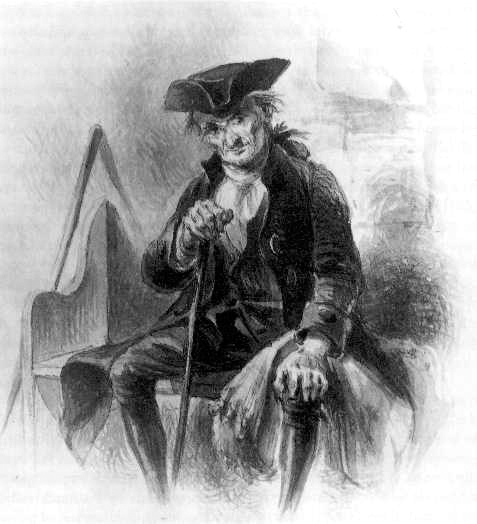|
Henry Hiram Riley
Henry Hiram Riley (born September 1, 1813 - February 8, 1888) was a lawyer, writer, and state senator in Michigan. He established a law practice in Constantine, Michigan. Riley was born in Great Barrington, Massachusetts. He was orphaned at 10 and lived with his uncle in New Hartford, New York. Career Riley was the editor of the '' Seneca Observer'' in Waterloo, New York, from 1837 until 1842 when he moved to Kalamazoo, Michigan Kalamazoo ( ) is a city in the southwest region of the U.S. state of Michigan. It is the county seat of Kalamazoo County. At the 2010 census, Kalamazoo had a population of 74,262. Kalamazoo is the major city of the Kalamazoo-Portage Metropolit ..., studied law for six months, and was admitted to the state bar. He became a prosecuting attorney and served two terms in the state senate. In 1873 he was appointed to the constitutional commission. He was a Democrat. Riley authored the ''Puddleford Papers'' published in '' Knickerbocker Magazine'' and then ... [...More Info...] [...Related Items...] OR: [Wikipedia] [Google] [Baidu] |
Constantine, Michigan
Constantine is a village in St. Joseph County in the U.S. state of Michigan. The population was 2,076 at the 2010 census. The village is located within Constantine Township. U.S. Highway 131 (Main Street in the village) leads to Kalamazoo to the north and to the Indiana Toll Road six miles to the south. The St. Joseph River, navigable from source to outlet, passes through the village, emptying in Lake Michigan to the west. The telephone provider is Verizon and the electric provider is AEP Indiana Michigan Power. Located in an agricultural area, Constantine is known as the Seed Corn Capital of the World, as both Monsanto and Pioneer having their biggest facilities located here. Constantine is the birthplace of Harry Hill Bandholtz, a US brigadier general in World War I and head of the US Military Mission to Hungary. Constantine has its own public high school, home of the Falcons. History The Potawatomi and related Native Americans historically had villages along the St. Jos ... [...More Info...] [...Related Items...] OR: [Wikipedia] [Google] [Baidu] |
Great Barrington, Massachusetts
Great Barrington is a town in Berkshire County, Massachusetts, United States. It is part of the Pittsfield, Massachusetts, Metropolitan Statistical Area. The population was 7,172 at the 2020 census. Both a summer resort and home to Ski Butternut, a ski resort, Great Barrington includes the villages of Van Deusenville and Housatonic. History 1676–1995 The Mahican Indians called the area ''Mahaiwe'', meaning "the place downstream". It lay on the New England Path, which connected Fort Orange near Albany, New York, with Springfield and Massachusetts Bay. The first recorded account of Europeans in the area happened in August 1676, during King Philip's War. Major John Talcott and his troops chased a group of 200 Mahican Natives west from Westfield, eventually overtaking them at the Housatonic River in what is now Great Barrington. According to reports at the time, Talcott's troops killed twenty-five Indians and imprisoned another twenty. Today, a plaque for John Talcott marks t ... [...More Info...] [...Related Items...] OR: [Wikipedia] [Google] [Baidu] |
New Hartford, New York
New Hartford is a Administrative divisions of New York#Town, town in Oneida County, New York, United States. As of the United States Census, 2010, 2010 census, the town population was 22,166. The name of New Hartford was provided by a settler family from Hartford, Connecticut. The Town of New Hartford contains a Administrative divisions of New York#Village, village named New Hartford (village), New York, New Hartford. New Hartford is the largest suburb of Utica, New York, Utica, which is located directly north of the town and village. History New Hartford was settled in March 1788 when Jedediah Sanger, who was bankrupted in 1784 by a fire at his farm in Jaffrey, New Hampshire moved to the area.History of Oneida County New York, Samuel W. Durant, Philadelphia, Everts & Gariss, 1878 Sanger Land Purchase Common history According to the earliest recorded history (''Annals and Recollections of Oneida County, Jones, 1851''), Sanger bought of land at a price of fifty cents an acre. ... [...More Info...] [...Related Items...] OR: [Wikipedia] [Google] [Baidu] |
Seneca Observer
The ''Seneca Observer'' was a weekly newspaper covering Seneca, New York, and Waterloo, New York, from 1832 until 1849. Charles Sentell was the publisher. The Library of Congress has preserved volumes of the newspaper on microfilm. Publishers were Charles Sentell in 1833, James C. Wood from 1834–1835, Henry Hiram Riley, H. H. Riley from 1837–1838, Guild & Tobey in 1839, Wood, Riley & Knox from 1839–1840, Charles Sentell from 1841–1844, S. Pew & F.A. Marsh in 1844, and H.H. Riley in 1846. Riley also served as the paper's editor. It was one of several papers established in the area during the first half of the 19th century and was initially established as the ''Waterloo Observer'' from 1828 until 1832. For a time, it was known as the ''Daily Seneca Observer''. It was succeeded by the ''Seneca Free Soil Union'' from 1848-1849 and the ''Seneca Observer & Union'' from 1849 - 1850 after merging with the ''Free Soil Union''. The ''Seneca Falls Democrat'' was the paper's rival. ' ... [...More Info...] [...Related Items...] OR: [Wikipedia] [Google] [Baidu] |
Waterloo, New York
Waterloo is a town in Seneca County, New York, United States. The population was 7,338 at the 2020 census. The town and its major community are named after Waterloo, Belgium, where Napoleon was defeated. There is also a village called Waterloo, the primary county seat of Seneca County. The Town of Waterloo is situated on the western border of the county, east of Geneva. History The area was the domain of the Seneca tribe and Cayuga tribe, who were visited in the 17th Century by Jesuit missionaries. The Sullivan Expedition passed through the area in 1779 to destroy the natives and their villages. After the war, the area was in the Central New York Military Tract, reserved for veterans. The region was first settled ''circa'' 1800. The town was formed from the Town of Junius in 1829. Geography According to the United States Census Bureau, the town has a total area of 21.8 square miles (56.5 km2), of which 21.7 square miles (56.2 km2) is land and ... [...More Info...] [...Related Items...] OR: [Wikipedia] [Google] [Baidu] |
Kalamazoo, Michigan
Kalamazoo ( ) is a city in the southwest region of the U.S. state of Michigan. It is the county seat of Kalamazoo County. At the 2010 census, Kalamazoo had a population of 74,262. Kalamazoo is the major city of the Kalamazoo-Portage Metropolitan Statistical Area, which had a population of 335,340 in 2015. Kalamazoo is equidistant from Chicago and Detroit, being about 140 miles (225 kilometers) away from both. One of Kalamazoo's most notable features is the Kalamazoo Mall, an outdoor pedestrian shopping mall. The city created the mall in 1959 by closing part of Burdick Street to auto traffic, although two of the mall's four blocks have been reopened to auto traffic since 1999. Kalamazoo is home to Western Michigan University, a large public university, Kalamazoo College, a private liberal arts college, and Kalamazoo Valley Community College, a two-year community college. Name origin Originally known as Bronson (after founder Titus Bronson) in the township of Arcadia, the na ... [...More Info...] [...Related Items...] OR: [Wikipedia] [Google] [Baidu] |
Knickerbocker Magazine
''The Knickerbocker'', or ''New-York Monthly Magazine'', was a literary magazine of New York City, founded by Charles Fenno Hoffman in 1833, and published until 1865. Its long-term editor and publisher was Lewis Gaylord Clark, whose "Editor's Table" column was a staple of the magazine. The circle of writers who contributed to the magazine and populated its cultural milieu are often known as the "Knickerbocker writers" or the "Knickerbocker Group". The group included such authors as William Cullen Bryant, Henry Wadsworth Longfellow, Oliver Wendell Holmes, James Russell Lowell and many others.Callow, James T. ''Kindred Spirits: Knickerbocker Writers and American Artists, 1807–1855''. Chapel Hill: The University of North Carolina Press, 1967: 104. ''The Knickerbocker'' was devoted to the fine arts in particular with occasional news, editorials and a few full-length biographical sketches.Callow 1967, p. 102. The magazine was one of the earliest literary vehicles for communi ... [...More Info...] [...Related Items...] OR: [Wikipedia] [Google] [Baidu] |
Michigan State Senators
Michigan () is a state in the Great Lakes region of the upper Midwestern United States. With a population of nearly 10.12 million and an area of nearly , Michigan is the 10th-largest state by population, the 11th-largest by area, and the largest by area east of the Mississippi River.''i.e.'', including water that is part of state territory. Georgia is the largest state by land area alone east of the Mississippi and Michigan the second-largest. Its capital is Lansing, and its largest city is Detroit. Metro Detroit is among the nation's most populous and largest metropolitan economies. Its name derives from a gallicized variant of the original Ojibwe word (), meaning "large water" or "large lake". Michigan consists of two peninsulas. The Lower Peninsula resembles the shape of a mitten, and comprises a majority of the state's land area. The Upper Peninsula (often called "the U.P.") is separated from the Lower Peninsula by the Straits of Mackinac, a channel that joins Lake ... [...More Info...] [...Related Items...] OR: [Wikipedia] [Google] [Baidu] |
1813 Births
Events January–March * January 18–January 23 – War of 1812: The Battle of Frenchtown is fought in modern-day Monroe, Michigan between the United States and a British and Native American alliance. * January 24 – The Philharmonic Society (later the Royal Philharmonic Society) is founded in London. * January 28 – Jane Austen's '' Pride and Prejudice'' is published anonymously in London. * January 31 – The Assembly of the Year XIII is inaugurated in Buenos Aires. * February – War of 1812 in North America: General William Henry Harrison sends out an expedition to burn the British vessels at Fort Malden by going across Lake Erie via the Bass Islands in sleighs, but the ice is not hard enough, and the expedition returns. * February 3 – Argentine War of Independence: José de San Martín and his Regiment of Mounted Grenadiers gain a largely symbolic victory against a Spanish royalist army in the Battle of San Lorenzo. * February ... [...More Info...] [...Related Items...] OR: [Wikipedia] [Google] [Baidu] |
1888 Deaths
In Germany, 1888 is known as the Year of the Three Emperors. Currently, it is the year that, when written in Roman numerals, has the most digits (13). The next year that also has 13 digits is the year 2388. The record will be surpassed as late as 2888, which has 14 digits. Events January–March * January 3 – The 91-centimeter telescope at Lick Observatory in California is first used. * January 12 – The Schoolhouse Blizzard hits Dakota Territory, the states of Montana, Minnesota, Nebraska, Kansas, and Texas, leaving 235 dead, many of them children on their way home from school. * January 13 – The National Geographic Society is founded in Washington, D.C. * January 21 – The Amateur Athletic Union is founded by William Buckingham Curtis in the United States. * January 26 – The Lawn Tennis Association is founded in England. * February 6 – Gillis Bildt becomes Prime Minister of Sweden (1888–1889). * February 27 – In West O ... [...More Info...] [...Related Items...] OR: [Wikipedia] [Google] [Baidu] |
.jpg)



